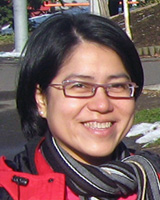Dear Editor
The retention of physicians in rural areas is a problem in developing nations. A community-oriented approach in the medical curriculum proved successful for the Ateneo de Zamboanga University School of Medicine (ADZU-SOM). Based on the 2010 alumni records of ADZU-SOM, 95% of its graduates have stayed in the country to serve, with 51% serving in rural areas. After deploying physicians to communities with no physicians, the next challenge is to keep them in these communities for a considerable period of time.
Poor healthcare and technology infrastructure in these remote areas are barriers to retention. However, the advent of telemedicine offers a promising method for connecting rural physicians with specialists in urban areas1,2. The use of video-conferencing for face-to-face consultations and the transfer of various media files (eg radio-imaging) has proven invaluable in providing expert advice to both patients and primary care physicians3.
In the southern archipelago of the Philippines (consisting of the main island Mindanao and the smaller islands of the Sulu archipelago), telemedicine may overcome the geographic challenges of rural healthcare. A 'teleconsultation' program consisting of cell-phone and web-based methods was devised by the Telehealth Office of the ADZU-SOM. In this program alumni of the ADZU-SOM who are municipal health officers (MHOs) were provided with laptop computers and mobile broadband internet, as well as access to the contact numbers of specialists. Three MHOs (35%) and 39 patients (36.4%) returned questionnaires that assessed their satisfaction with this system. The MHOs were followed up for information about the number of cases that they felt needed specialist referrals, and the number actually referred using whichever mode of technology (cell-phone text, calls, web-based).
In a program assessment spanning 15 months, MHOs used information technology referral to specialists for half the cases requiring specialist referral, with cell-phone texting being the most popular method of referral (42% of consultations), followed by direct calls to the specialist (14.3%). Despite the provision of laptop computers and wireless broadband service without cost to these MHOs, none of the consultations used the a web-based forum or email. Among those who used information technology for referral, both MHOs and patients found this to be generally satisfactory, with some concerns expressed about the time taken for response after text referrals, and the expense of the entire system. The reasons given for the preference for cell phone use for referrals were: it offers a real-time response; it is easy to use; there is no need to 'boot up' equipment (as when using computers); it does not depend on the variable bandwidth speed of wireless broadband; and it offers longer battery life than laptops computers.
While real-time video and other face-to-face consultations using computers are possible in the rural areas of developed countries, this form of telemedicine is not currently available in the Mindanao setting4. Therefore, in this area, efforts should be shifted to developing applications that improve the delivery of media files such as radio-imaging, auscultatory findings, and video using cell phones. In this way, healthcare delivery may be improved within the range of resources currently available.
Bernadette C Macrohon, MD
Coordinator, Telehealth Office
and Cristobal L Fortunato, MD
Dean, School of Medicine
Ateneo de Zamboanga University
Zamboanga City, Philippines
References
1. Heinzelmann PJ, Jacques G, Kvedar JC. Telemedicine by email in remote Cambodia. Journal of Telemedicine and Telecare 2005; 11(Suppl2): 44-47.
2. Ricci MA, Caputo MP, Callas PW, Gagne M. The use of telemedicine for delivering continuing medical education in rural communities. Telemedicine Journal and e Health 2005; 11(2):124-129.
3. Smith AC, Bensink M, Armfield N, Stillman J, Caffery L. Telemedicine and rural health care applications. Journal of Postgraduate Medicine 51(4): 286-293. (Online) 2005. Available: http://www.jpgmonline.com/article.asp?issn=0022-3859;year=2005;volume=51;issue=4;spage=286;epage=293;aulast=Smith (Accessed 20 April 2011).
4. Whitten P, Love B. Patient and provider satisfaction with the use of telemedicine: overview and rationale for cautious enthusiasm. Journal of Postgraduate Medicine 51(4): 294-300. (Online) 2005. Available: http://www.jpgmonline.com/article.asp?issn=0022-3859;year=2005;volume=51;issue=4;spage=294;epage=300;aulast=Whitten (Accessed 20 April 2011).

